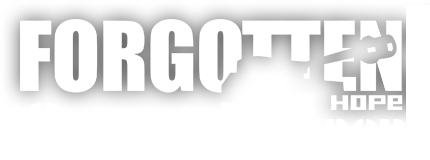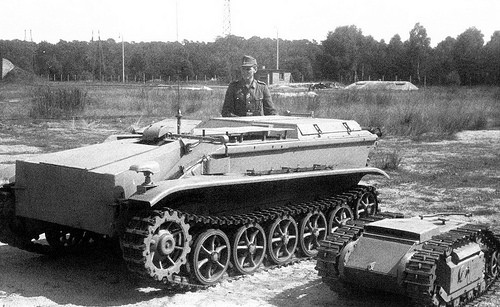Offically designated as Schwerer Ladungsträger Borgward B IV (Sd.Kfz. 301), the Borgward IV was a German remote-controlled demolition vehicle. Germany used three types of remote-controlled demolition vehicles. The Goliath (Sd.Kfz. 302, Sd.Kfz.303a & Sd.Kfz.303b) was the lightest, then the Springer (Sd.Kfz. 304) and the heaviest is the Borward IV. When the explosions are ignited, the Goliath and Sprtinger were destroyed. The Borgwald, wich was originally developed as an ammunition carrier, releasing its explosives before detonating. The reason why the Borgward was used as remote-controlled demolition vehicle was that the vehicle unsuitable was for the task. It was also tested as a remote minesweeper, but was too vulnerable to mines and too expensive. During the Battle of France, German engineers from the 1st Panzer Division converted 10 Panzer I Ausf Bs into demolition and mine clearing vehicles, using them to place timed charges on bunkers or minefields without losing the vehicle. The Waffenamt found the idea valuable, and ordered the B IV's development as a remote-controlled demolition vehicle. The first vehicles were delivered in 1942.
The Borgward IV was much heavier than the Goliath, and carried a much larger payload. The Borgward IV was operated by radio and the Goliath was wire guided, due to the Borgward IV's much longer range a driver in the vehicle would bring it independently to its destination before dismounting and conducting it to its target by radio. When it reached the target, the vehicle would drop the charge and leave the danger area. This put Borgward IV operators in great danger. While the Borgward IV was armored, its armor was inadequate by 1942-43, and its larger size than the Goliath made it much easier to spot.
Variants
- Borgward IV Ausf. A: Equipped with a 49-horsepower 4-cylinder water-cooled gasoline engine. +/- 616 produced between May 1942 and June 1943
- Borgward IV Ausf. B: Weight increased. radio antenne was moved and better radio equipment was used. +/- 260 produced between June 1943 and November 1943
- Borgward IV Ausf. C: Final variant. The chassis was and the weight further increased. The armor on the Ausf. C was thicker than the previous variants, new tracks were used, the driver's seat was moved to the left of the vehicle and a new 78 horsepower 6-cylinder engine was used. +/- 305 produced between December 1943 to September 1944.
- Panzerjäger Wanze: Near the end of World War II, approximately 56 Ausf. Bs and Cs were converted to the Panzerjäger Wanze, armed with six RPzB 54/1 anti-tank rockets. In the last days of the war, these vehicles fought some minor skirmishes against Soviet armor and saw some action at the Battle of Berlin.
| ||||||||


